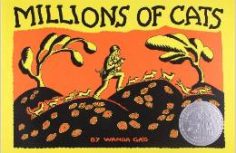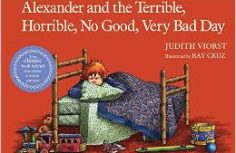by Wanda Gág
Wanda Gág’s classic Millions of Cats was a Newbery Honor Book in 1929. Millions of Cats is one of the oldest picture books still in print. Ms. Gág’s simple black and white illustrations accompanied by hand-lettered print give the comfortable impression of an old folktale. The ideas of love, beauty, and happiness will lead to questions during the Second Reading and interesting discussions after the Third Reading.
The old man’s lyrical phrase, “…..hundreds of cats, thousands of cats, millions and billions and trillions of cats” will be easily learned and repeated by your listeners. Playing with these math words makes it easy to connect our preschoolers to the Kindergarten Math Standards. Talking about the sequence from hundreds through trillions is great fun. Thanks to Buzz Lightyear, many of our preschoolers already use the term infinity. Many make up words like gazillion to mean a huge quantity. Let’s teach them a proper sequence of authentic math terms to mean increasingly huge quantities.
In the Third Reading activities, you’ll see a very simple graphic organizer that illustrates the sequence of the terms to show how the math words relate to each other. Using Graphic Organizers is a Reading Comprehension Best Practice. Graphic organizers allow us to show relationships, not just talk about them. As your child moves through school, you’ll become aware of graphic organizers in many academic areas. Quite a bit of research exists validating their effectiveness. Patty Kohler of the University of Central Arkansas wrote an interesting article for the June/July, 2009 edition of The Teaching Professor on the effectiveness of graphic organizers. In the article she says, “Research clearly indicates that brain activity is enhanced when we use and teach our students to represent information in a visual way…….(graphic organizers make) recall and retention easier for many students.”
Read more...



